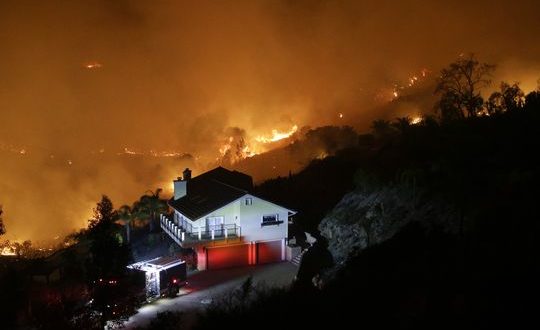Overpopulated CA’s Carbon Emissions Goals Harmed by Wildfires
Published on October 20th, 2022
One step forward, two steps back. That’s what seems to be happening to California’s environmental goals due to the state’s wildfire epidemic.
A study from the Energy Policy Institute at the University of Chicago details the unfortunate phenomenon that’s occurring in our state.
“In this short communication, we estimate that California’s wildfire carbon dioxide equivalent (CO2e) emissions from 2020 are approximately two times higher than California’s total greenhouse gas (GHG) emission reductions since 2003.”
The study’s description says that wildfires in 2020 resulted in $7.1 billion dollars in damages, and that more resources should be dedicated to preventative forestry management.
One of the study’s coauthors, Amir Jina of U-Chicago, commented the following to Axios in their writeup on the study:
“Fire control policy can also be climate policy[.]”
As mentioned in the Axios writeup, the state of California does not currently track emissions from wildfires when calculating their climate goals for total emissions released into the environment.
On the heels of this study, Californians are also weighing the pros and cons of Proposition 30.
As reported in the LA Times, the crux of the initiative is taxing wealthier citizens and spending it on environmental initiatives to reduce carbon emissions, including wildfires.
“Proposition 30 would raise taxes on the wealthy, to the tune of an estimated $3.5 billion to $5 billion in annual revenue. Eighty percent of the money would be used to subsidize electric cars and charging stations, with the rest going to wildfire safety.”
While the initiative aims to reduce carbon emissions, it has divided even environmental advocates. With that said, the data on how cars and other forms of transportation affect carbon emissions is undeniable.
“Transportation accounts for roughly 40% of California’s planet-warming emissions. State officials expect we’ll need 8 million electric cars on the road by 2030, up from about 1 million today.”
We know we always mention it, but the studies on California’s environment never mention the impact that overpopulation plays. More people means more cars on the road, more water consumed, more resources extracted, and more degradation of our environment.
As our world is set to hit 8 billion people this November, it’s time to talk about how California’s environmental problems are linked with its overpopulation problem.





